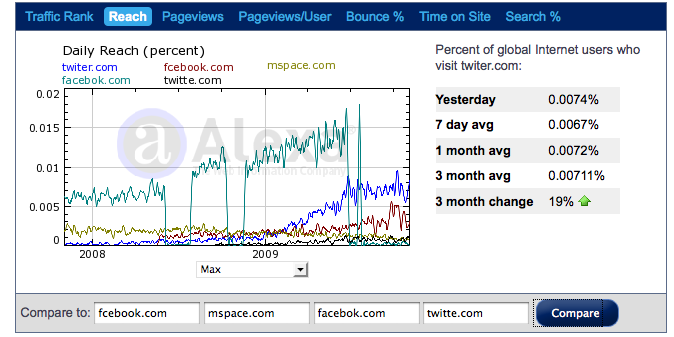There has been some recent confusion about how much memory you need in a web server to handle a huge number of concurrent requests. I also made a performance claim on the STS list that got me an unusual number of private emails.
Here’s how you run a highly concurrent website on a shoe-string budget:
The first thing you’ll do is get a Linode server because they have the fastest CPU and disk.
Install Apache with your web application running under mod_php, mod_perl or some other persistence engine for your language. Then you get famous and start getting emails about people not being able to access your website.
You increase the number of Apache threads or processes (depending on which Apache MPM you’re using) until you can’t anymore because you only have 360MB of memory in your server.
Then you’ll lower the KeepaliveTimeout and eventually disable Keepalive so that more users can access your website without tying up your Apache processes. Your users will slow down a little because they now have to re-establish a new connection for every piece of your website they want to fetch, but you’ll be able to serve more of them.
But as you scale up you will get a few more emails about your server being down. Even though you’ve disabled keepalive it still takes time for each Apache child to send data to users, especially if they’re on slow connections or connections with high latency. Here’s what you do next:
Install Nginx on your new Linode box and get it to listen on Port 80. Then reconfigure Apache so that it listens on another port – say port 81 – and can only be accessed from the local machine. Configure Nginx as a reverse proxy to Apache listening on port 81 so that it sits in front of Apache like so:
YourVisitor <—–> Nginx:Port80 <—–> Apache:Port81
Enable Keepalive on Nginx and set the Keepalive timeout as high as you’d like. Disable Keepalive on Apache – this is just-in-case because Nginx’s proxy engine doesn’t support Keepalive to the back-end servers anyway.
The 10 or so Apache children you’re running will be getting requests from a client (Nginx) that is running locally. Because there is zero latency and a huge amount of bandwidth (it’s a loopback request), the only time Apache takes to handle the request is the amount of CPU time it actually takes to handle the request. Apache children are no longer tied up with clients on slow connections. So each request is handled in a few microseconds, freeing up each child to do a hell of a lot more work.
Nginx will occupy about 5 to 10 Megs of Memory. You’ll see thousands of users concurrently connected to it. If you have Munin loaded on your server check out the netstat graph. Bitchin isn’t it? You’ll also notice that Nginx uses very little CPU – almost nothing in fact. That’s because Nginx is designed using a single threaded model where one thread handles a huge number of connections. It can do this with little CPU usage because it uses a feature in the Linux kernel called epoll().
Footnotes:
Lack of time forced me to leave out all explanations on how to install and configure Nginx (I’m assuming you know Apache already) – but the Nginx Wiki is excellent, even if the Russain translation is a little rough.
I’ve also purposely left out all references to solving disk bottlenecks (as I’ve left out a discussion about browser caching) because there has been a lot written about this and depending on what app or app-server you’re running, there are some very standard ways to solve IO problems already. e.g. Memcached, the InnoDB cache for MySQL, PHP’s Alternative PHP Cache, perstence engines that keep your compiled code in memory, etc..etc..
This technique works to speed up any back-end application server that uses a one-thread-per-connection model. It doesn’t matter if it’s Ruby via FastCGI, Mod_Perl on Apache or some crappy little Bash script spitting out data on a socket.
This is a very standard config for most high traffic websites today. It’s how they are able to leave keepalive enabled and handle a huge number of concurrent users with a relatively small app server cluster. Lighttpd and Nginx are the two most popular free FSM/epoll web servers out there and Nginx is the fastest growing, best designed (IMHO) and the one I use to serve 400 requests per second on a small Apache cluster. It’s also what guys like WordPress.com use.






